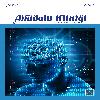Göğüs Cerrahisi Sonrası Erken Dönemde Uygulanan Fizyoterapinin Hemodinamik Etkileri
Hemodynamic Effects of Early Physiotherapy in Intensive Care Unit after Chest Surgery
___
- 1. Haller G, Walder B. Postoperative pulmonary complications: still room for improvement. Eur J SAnaesthesiol. 2017;34(8):489–91.
- 2. Bendixen M, Jorgensen OD, Kronborg C, Andersen C, Licht PB. Postoperative pain and quality of life after lobectomy via video-assisted thoracoscopic surgery or anterolateral thoracotomy for early stage lung cancer: a randomised controlled trial. Lancet Oncol. 2016;17(6):836–44.
- 3. Baddeley RA. Physiotherapy for enhanced recovery in thoracic surgery. J Thorac Dis. 2016;8(Suppl 1):S107–10.
- 4. Naccarato M, Leviner S, Proehl J, Barnason S, Brim C, Crowley M ve ark. Emergency Nursing Resource: orthostatic vital signs. J Emerg Nurs. 2012;38(5):447–53.
- 5. dos Santos RS, Donadio MV, da Silva GV, Blattner CN, Melo DA, Nunes FB ve ark. Immediate effects of chest physiotherapy on hemodynamic, metabolic, and oxidative stress parameters in subjects with septic shock. Respir Care. 2014;59(9):1398–403.
- 6. Agostini P, Naidu B, Cieslik H, Steyn R, Rajesh PB, Bishay E ve ark. Effectiveness of incentive spirometry in patients following thoracotomy and lung resection including those at high risk for developing pulmonary complications. Thorax. 2013;68(6):580–5.
- 7. Overend TJ, Anderson CM, Lucy SD, Bhatia C, Jonsson BI, Timmermans C. The effect of incentive spirometry on postoperative pulmonary complications: a systematic review. Chest. 2001;120(3):971–8.
- 8. Rupp M, Miley H, Russell-Babin K. Incentive spirometry in postoperative abdominal/thoracic surgery patients. AACN Adv Crit Care. 2013;24(3):255–63.
- 9. Melendez JA, Alagesan R, Reinsel R, Weissman C, Burt M. Postthoracotomy respiratory muscle mechanics during incentive spirometry using respiratory inductance plethysmography. Chest. 1992;101(2):432–6.
- 10. Schmidt I. [Assisted cough--physiotherapy to improve expectoration of mucus]. Pneumologie. 2008;62(Suppl. 1):S23–7.
- 11. Sobush DC. Is the application of external thoracic support following median sternotomy a placebo or a prudent intervention strategy? Respir Care. 2008;53(8):1010–1.
- 12. Hodgson CL, Berney S, Harrold M, Saxena M, Bellomo R. Clinical review: early patient mobilization in the ICU. Crit Care. 2013;17(1):207.
- 13. Schujmann DS, Lunardi AC, Fu C. Progressive mobility program and technology to increase the level of physical activity and its benefits in respiratory, muscular system, and functionality of ICU patients: study protocol for a randomized controlled trial. Trials. 2018;19(1):274.
- 14. Khan MH, Kunselman AR, Leuenberger UA, Davidson WR, Jr., Ray CA, Gray KS ve ark. Attenuated sympathetic nerve responses after 24 hours of bed rest. Am J Physiol Heart Circ Physiol. 2002;282(6):H2210–5.
- 15. Borg GA. Psychophysical bases of perceived exertion. Med Sci Sports Exerc. 1982;14(5):377–81.
- 16. Castelino T, Fiore JF, Jr., Niculiseanu P, Landry T, Augustin B, Feldman LS. The effect of early mobilization protocols on postoperative outcomes following abdominal and thoracic surgery: a systematic review. Surgery. 2016;159(4):991–1003.
- 17. Hanada M, Kanetaka K, Hidaka S, Taniguchi K, Oikawa M, Sato S ve ark. Effect of early mobilization on postoperative pulmonary complications in patients undergoing video-assisted thoracoscopic surgery on the esophagus. Esophagus. 2018;15(2):69–74.
- 18. Arbane G, Douiri A, Hart N, Hopkinson NS, Singh S, Speed C ve ark. Effect of postoperative physical training on activity after curative surgery for non-small cell lung cancer: a multicentre randomised controlled trial. Physiotherapy. 2014;100(2):100–7.
- 19. Kaneda H, Saito Y, Okamoto M, Maniwa T, Minami K, Imamura H. Early postoperative mobilization with walking at 4 hours after lobectomy in lung cancer patients. Gen Thorac Cardiovasc Surg. 2007;55(12):493–8.
- 20. Klein P, Kemper M, Weissman C, Rosenbaum SH, Askanazi J, Hyman AI. Attenuation of the hemodynamic responses to chest physical therapy. Chest. 1988;93(1):38– 42.
- 21. Selwyn AP BE. Harrison’s Principles of Internal Medicine, 15. ed. Baltimore: 2001:1399–410.
- 22. Wong. W. Use of body positioning in the mechanically ventilated patient with acute respiratory failure: application of Sackett’s rules of evidence. Physiother Theory Pract. 2009;15(1):25–41.
- 23. Stiller K, Phillips, AC., P. Lambert. The safety of mobilisation and its effect on haemodynamic and respiratory status of intensive care patients. Physiother Theory Pract. 2004;20:175–85.
- ISSN: 2149-5254
- Yayın Aralığı: Yılda 3 Sayı
- Başlangıç: 1933
- Yayıncı: Hayat Sağlık ve Sosyal Hizmetler Vakfı
Çocuklarda Mesane Disfonksiyonunun Ultrasonografisi: Cinsiyet Ölçümler ve Tanıda Etkili mi?
Yasemin DURUM POLAT, Gizem ESEN, Ferah SÖNMEZ, Filiz ABACIGİL, Mehmet BİLGEN
Emre Ebem, Mahmut Sami Tutar, Munise Yıldız, Ahmet Canıtez, Özlem Kara, Betül Kozanhan
Hat zeyil iltihaplarına ne zaman müdahale edilmelidir?
Bilateral Koklear Otoskleroz: Klinik ve Radyolojik Bulgular
Fatih Doğan, Seyfullah Oktay Arslan, Fidan Pesen Özdoğan, Kemal Gökhan Ulusoy, Enis Macit, Saliha Ayşenur Cam, Fatma Uysal
Kolorektal Kanserde Tiyol–Disülfit Düzeyleri
Ayşe ÖZDEMİR, Utku Dönem DİLLİ, Dalyan ÖZDEMİR, Salim NEŞELİOĞLU, Özcan EREL
Göğüs Cerrahisi Sonrası Erken Dönemde Uygulanan Fizyoterapinin Hemodinamik Etkileri
Esra Pehlivan, Arif Balcı, Feride Elçin Cagay, Z. Nilgün Ulukol
Bir Tıp Fakültesi Hastanesinin Çocuk Acil Servisine Başvuran Hastaların Özellikleri
Ramazan Cahit TEMİZKAN, Nursel BÜYÜK, Önder KILIÇASLAN, Handan ANKARALI, Kenan KOCABAY
Serkan Aksu, Adnan Kurt, Ahmet Zihni Soyata, Kardelen Türkü Saçar, Semih Taşdelen, Sacit Karamürsel
Yüksel Balcı, Anıl Özgür, Sermin Tok Umay, Kaan Esen, Semra Erdoğan, Gülhan Temel
